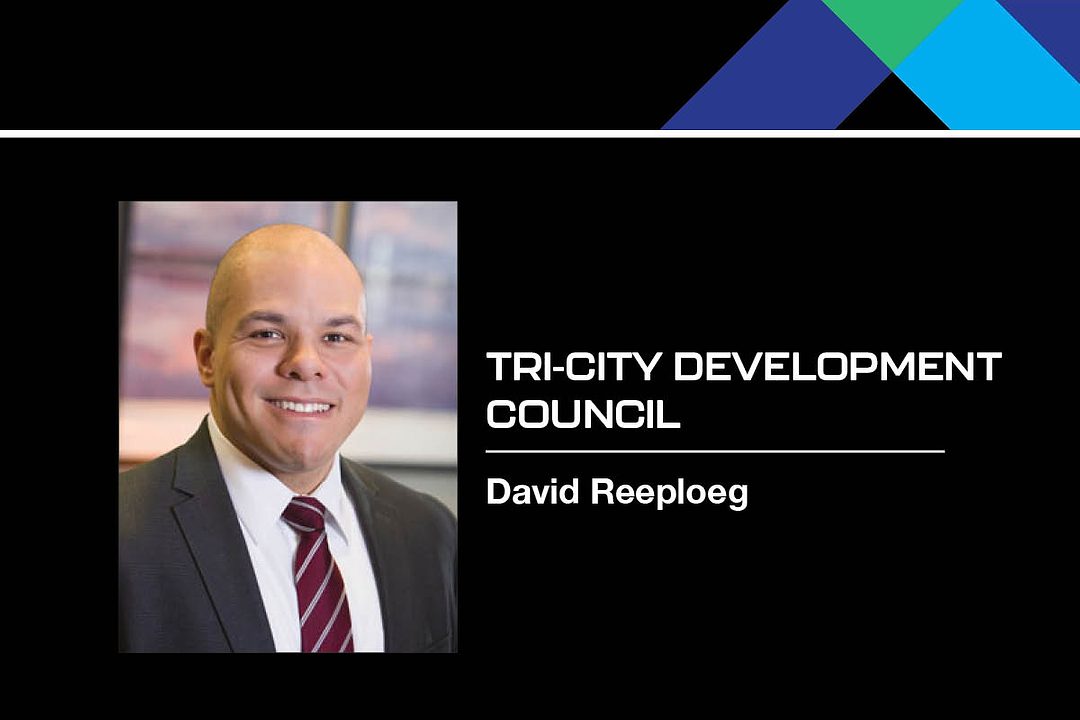
Home » Uncertainties may present challenges but also unique opportunities
Hanford 2025
Uncertainties may present challenges but also unique opportunities

April 14, 2025
This year marks the 80th anniversary of the ending of World War II, a conclusion that was expedited by the atomic bombing of Nagasaki, Japan, with plutonium produced at the Hanford site. Beginning with this top-secret Manhattan Project mission, Hanford became a workhorse of America’s nuclear weapons complex throughout the Cold War. Ultimately, nine plutonium production reactors operated at Hanford, supplying about two-thirds of the country’s plutonium stockpile.
This massive operation drove incredible growth throughout the entire region, transforming three small farming communities into what is now the third-largest metropolitan area in Washington state. This growth hasn’t always been easy and has included many ups and downs. One of the most challenging times was during the 1980s, when layoffs at the Washington Public Power Supply System and the conclusion of the national security mission threw the local economy into a tailspin that many feared our community would not be able to recover from.
Despite these challenges, our community has continued to grow and prosper. In 1990, the Tri-Cities’ population stood at just over 150,000 people. Nearly 25% of the jobs and 50% of the income were tied to the U.S. Department of Energy’s work here. Today, we have a population of over 320,000 people, and DOE-related activities account for less than 13% of the jobs and 25% of the income.
Economic diversity
This growth and economic diversification has been driven by a decades-long effort by numerous organizations and local governments from throughout the Tri-City region. Moving forward, we intend to continue leveraging former Hanford land to bring in private industry that is attracted by our highly-skilled workforce, available land, infrastructure and supportive community.
Specific opportunities include Energy Northwest’s partnership with Amazon and X-energy to develop an advanced nuclear reactor near the Columbia Generating Station (the Pacific Northwest’s only commercial nuclear reactor), and the expansion of Framatome’s nuclear fuel manufacturing facility in Richland.
We are also very excited about new projects such as Atlas Agro’s planned Pacific Green facility. Atlas’ domestically-manufactured nitrogen fertilizer will allow growers to produce higher yields than the imported urea-based products in use today, while also reducing the carbon footprint by 99%. Most recently, the city of Richland signed a purchase and sale agreement with Washington Energy LLC with the goal of building a world-class uranium enrichment facility to meet the needs of the next generation of nuclear reactors. Both projects are on former Hanford land that was transferred to the community in 2015.
Successful cleanup
While we continue working to grow and diversify the economy, successful cleanup of the Hanford site remains a top priority as well. Significant cleanup progress has been made since that work began with the signing of the Tri-Party Agreement in 1989, and important milestones like the beginning of tank waste treatment are expected later this year. Still, there is much more work to do.
Current DOE estimates have Hanford cleanup continuing until the year 2078. The specific cleanup projects and priorities will evolve over the next 53 years, but one constant is that Hanford will require a highly skilled and well-trained workforce to ensure the work is completed in a safe and effective manner. This need is shared by private industry and is a top priority for companies when they are deciding whether to locate or expand their operations in a community.
To that end, the Tri-Cities is blessed to have a whole host of partners who are dedicated to providing the education and training that is needed now and in the future. These partners include school districts, higher education institutions, labor union apprenticeship programs and local nonprofits. Together, our plan is to assess projected workforce needs and then to address any gaps in programs or capacity to meet these needs. Our goal is also to ensure every member of the Tri-City community is able to easily identify career opportunities that fit them best and have a “road map” for how to acquire the credentials needed to get them where they want to be.
At the time of this writing in early March 2025, there is new leadership at the state and federal levels. There is also a lot of uncertainty, including the impacts of potential state budget cuts and of recent reductions in the federal workforce at Hanford. While these transitions may present new challenges, they can also create new opportunities. Like we’ve done many times since our creation in 1963, TRIDEC will work with our partners from across the community and with state and federal officials to advocate for the Tri-Cities’ priorities and ensure our continued growth and prosperity for the next 80 years.
David Reeploeg is vice president for federal programs at the Tri-City Development Council.
Hanford
KEYWORDS April 2025
Related Articles
Related Products





